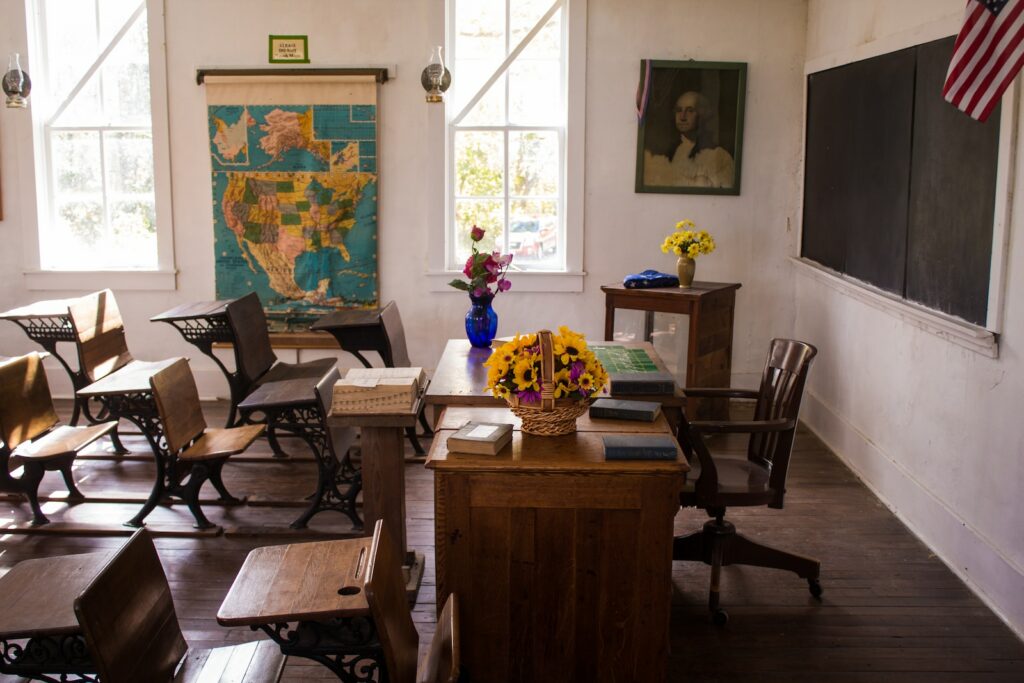As we navigate the vast expanse of the US, we take a look at the 10 states with the worst education system. We find that each state boasts its unique flavor, culture, and educational practices. Unfortunately, not every state shines when it comes to their education system. Let’s shed some light on the 10 states that often find themselves facing challenges in this arena.
Contents
- 1 How Do We Rank Them?
- 1.1 Mississippi: The Funding Dilemma
- 1.2 New Mexico: Socio-Economic Challenges
- 1.3 Nevada: Beyond The Glitz
- 1.4 Louisiana: A Mix of Issues
- 1.5 West Virginia: Economic Impact
- 1.6 Alabama: Seeking Modern Solutions
- 1.7 Arizona: The Classroom Ratio Issue
- 1.8 Alaska: Geographical Challenges
- 1.9 Oklahoma: Funding Woes
- 1.10 South Carolina: The Quality Conundrum
- 2 The Road Ahead Concerning States With The Worst Education System
- 3 FAQs
How Do We Rank Them?
Venturing into the realm of educational rankings, it’s natural to ponder, “On what basis do we judge?” After all, it’s not merely a game of numbers and letter grades. Let’s break down the multifaceted criteria:
- Funding and Resources: A school’s budget can play a colossal role in its overall effectiveness. Does the state allocate enough funds to ensure every student has access to quality textbooks, technology, and extracurriculars?
- Teacher-Student Ratios: Ever tried getting a point across in a bustling room? Lower ratios often mean students receive more individualized attention, making this a crucial factor.
- Graduation Rates: It’s one thing to keep students in school, but ensuring they walk away with a diploma is another challenge altogether.
- Standardized Test Scores: While they don’t paint the full picture, these scores can provide insights into a state’s curriculum’s effectiveness.
- Socio-Economic Factors: External influences, such as a student’s home environment or economic status, can significantly impact their academic performance.
- Infrastructure and Facilities: Are the school buildings in good shape? Do they provide a conducive learning environment?
- Teacher Qualifications: A passionate, well-trained teacher can make a world of difference. How does the state fare in attracting and retaining such educators?
By taking a comprehensive look at these factors (and more!), we can piece together a clearer image of the education landscape in each state.
Mississippi: The Funding Dilemma
Mississippi, frequently found at the lower rungs of educational rankings, grapples with a persistent and challenging funding dilemma that profoundly impacts its education system. This ongoing issue of underfunding has a ripple effect, touching upon various facets of education, from the availability of crucial resources to the overall quality of instruction.
As the state endeavors to uplift its educational standing, it recognizes the urgency of addressing the funding shortfall to provide its students with the resources and opportunities needed for a brighter educational future. The journey to overcome these challenges represents Mississippi’s unwavering commitment to enhancing the educational landscape for all its learners.
New Mexico: Socio-Economic Challenges
Nestled in the heart of the American Southwest, New Mexico boasts a rich tapestry of cultures and a history that spans centuries. However, juxtaposed against its vibrant traditions and picturesque landscapes is an education system grappling with its own set of challenges. Socio-economic hurdles have significantly influenced the state’s educational outcomes.
Limited resources, high poverty rates, and discrepancies in educational opportunities across different communities have made it a focal point for education reforms. Furthermore, while the state is filled with dedicated teachers and eager students, the system often struggles to provide consistent quality due to these disparities.
Nevada: Beyond The Glitz
Famed for the dazzling allure of Las Vegas, Nevada presents a contrasting picture when it comes to its educational framework. Beneath the glitz and glam of The Strip, the state faces formidable educational challenges. Overcrowded classrooms are a pressing concern, making personalized attention a rarity.
A high student-to-teacher ratio compounds the issue, placing significant strain on educators. Furthermore, with a continuously transient population, often lured by the state’s entertainment and tourism industries, ensuring consistent educational quality becomes an uphill battle. While Nevada shines bright in entertainment, there’s ample room for growth in its academic arena.
Louisiana: A Mix of Issues
Louisiana finds itself grappling with a complex medley of issues that encompass its educational landscape. Ranging from persistently low standardized test scores that raise concerns about academic performance to the ongoing struggle with diminished funding, the state’s educational system confronts a multifaceted array of challenges.
These intricacies not only shape the educational experience of its students but also have a significant impact on Louisiana’s standing in national education rankings, painting a vivid portrait of the intricacies and hurdles faced by the state’s educational institutions.
West Virginia: Economic Impact
West Virginia grapples with the far-reaching economic impact that has left its economy in a state of decline. This economic downturn, in turn, has cast a shadow over the state’s educational institutions.
The persistent financial challenges faced by West Virginia’s schools have unfortunately hindered their ability to offer a top-tier education to their students. These financial constraints, evident in reduced funding and resource limitations, reverberate in the state’s educational rankings, painting a stark picture of the broader economic struggles that have shaped the educational landscape in West Virginia.
Alabama: Seeking Modern Solutions
Alabama, with its deep-rooted traditions, finds itself on a transformative journey as it seeks to usher in a more modern era for its education system. The state is diligently working to shed the vestiges of tradition and embrace innovative approaches to education.
However, this process is not without its challenges, as Alabama continues to grapple with issues stemming from outdated resources and infrastructures that have yet to catch up with its evolving educational aspirations. Despite these hurdles, Alabama remains committed to the path of progress, as it strives to bridge the gap between its time-honored heritage and the demands of a rapidly changing educational landscape.
Arizona: The Classroom Ratio Issue
In the vibrant state of Arizona, an education conundrum looms large, epitomized by the challenging classroom ratio issue. Within the halls of its schools, the high teacher-to-student ratio paints a vivid picture where students often find themselves lost in a sea of faces, making individualized attention a precious and elusive commodity rather than a guaranteed educational privilege.
This situation not only impacts the quality of education but also underscores the pressing need for reforms and investments in the state’s educational infrastructure to ensure that every student receives the focused support they deserve in their pursuit of knowledge.
Alaska: Geographical Challenges
Alaska, with its awe-inspiring landscapes and natural wonders, presents a unique set of geographical challenges that extend to the realm of education. The state’s sheer size and the presence of vast, often isolated territories create a formidable hurdle in the pursuit of consistent and high-quality education delivery.
As educators and policymakers navigate the rugged terrain and remote communities, they are confronted with the formidable task of ensuring that every student, regardless of their geographical location, has equitable access to educational resources and opportunities.
Alaska’s dedication to overcoming these geographical barriers reflects its unwavering commitment to providing all its residents with a chance to thrive through education, despite the majestic but challenging backdrop of its wilderness.
Oklahoma: Funding Woes
Oklahoma, known for its resilient and indomitable spirit, faces a significant hurdle in its education system, stemming from persistent funding woes. These financial challenges have cast a shadow over various aspects of education in the state, ranging from the availability of essential resources to the competitiveness of teacher salaries.
While the state’s commitment to education remains unwavering, the ongoing battle to secure adequate funding underscores the importance of finding sustainable solutions to ensure that Oklahoma’s students receive the top-quality education they deserve.
Despite these challenges, the tenacity and determination of the state’s educators, parents, and policymakers continue to shape a brighter future for Oklahoma’s learners.
South Carolina: The Quality Conundrum
South Carolina, in completing our list, presents a compelling education conundrum characterized by the ebb and flow of standardized test scores and the challenge of maintaining consistent educational quality.
This fluctuation in performance serves as a poignant reminder of the need for systemic improvements within the state’s educational landscape. As South Carolina grapples with these complexities, it is evident that concerted efforts and innovative solutions are required to ensure that its educational institutions can provide a stable and high-quality learning environment for all students.
The state’s journey towards educational excellence continues, driven by the aspiration to offer its learners a brighter and more consistent future.
The Road Ahead Concerning States With The Worst Education System
We gave you our pick for the 10 states with the worst education system. It’s essential to approach this list with empathy and an understanding that every state, regardless of its ranking, is home to dedicated educators and promising students. The key is recognizing challenges and advocating for change.
FAQs
What factors contribute to these rankings?
A combination of funding, teacher-student ratios, graduation rates, socio-economic challenges, and standardized test scores determine these rankings.
Is it possible for states to improve their rankings?
Absolutely! With targeted policies, investment, and community involvement, any state can elevate its education system.
How do socio-economic factors play into these rankings?
Socio-economic conditions can influence funding, resource availability, student morale, and even teacher qualifications.
Are urban schools in these states better than rural ones?
It varies. While urban schools might have more resources, they can also face challenges like overcrowding. Conversely, rural schools might lack resources but provide a closer-knit learning environment.
How can I support education improvement in these states?
Engage with local school boards, vote for education-friendly policies, volunteer, and consider careers or initiatives that bolster education.






